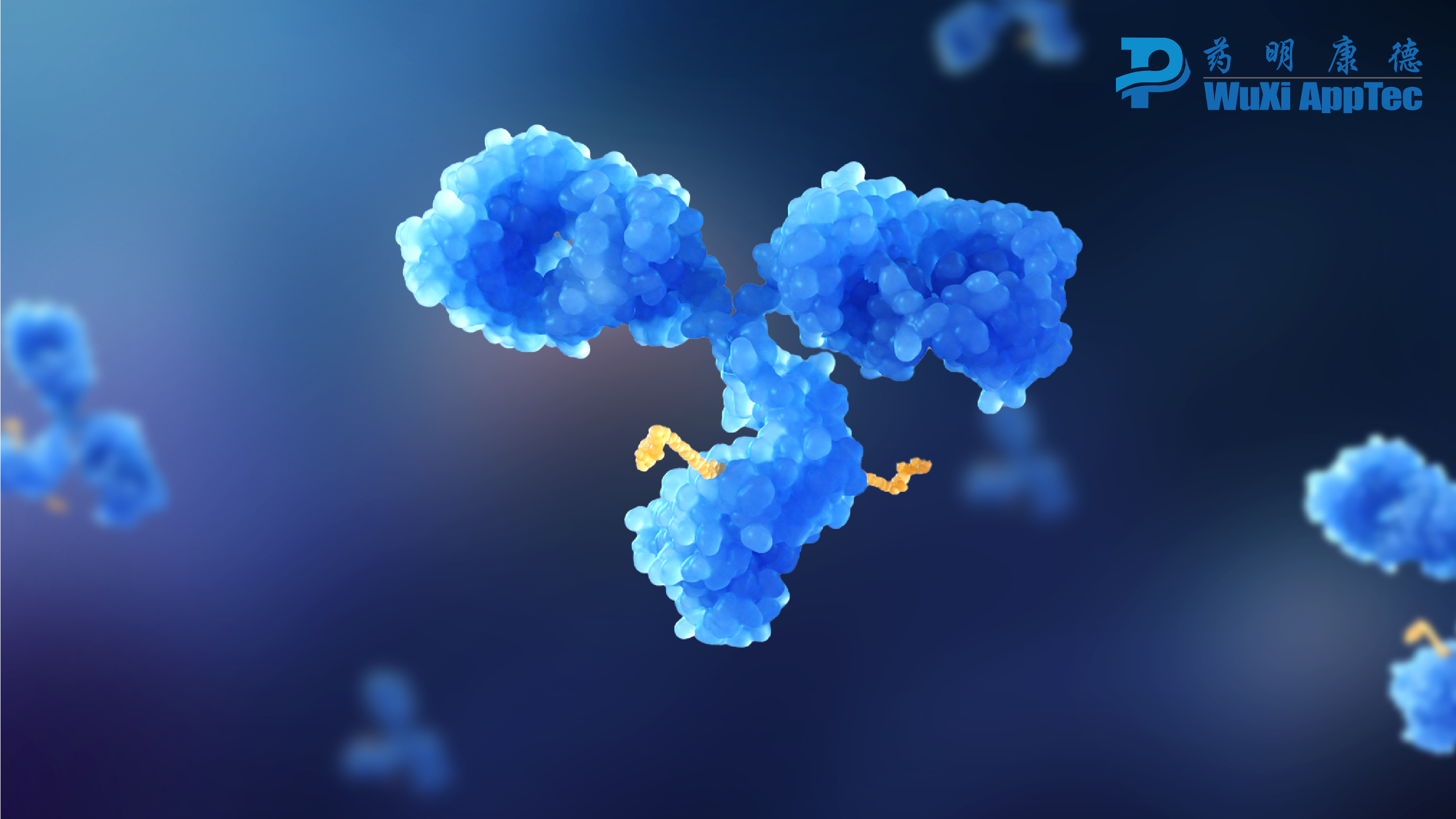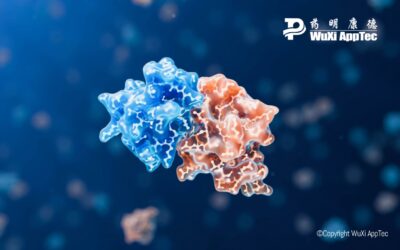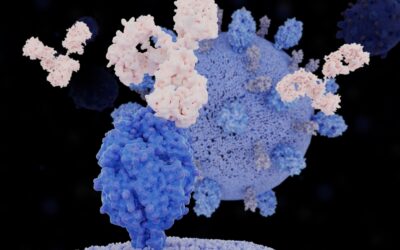Since German Nobel laureate Paul Ehrlich developed the concept of the “magic bullet” in 1907, researchers have chased the possibility relentlessly. Ehrlich’s immune response research proposed killing specific microbes without harming the body itself, a goal which was quickly adopted by researchers looking to eradicate cancer cells while avoiding damage to healthy tissue.
Over a century later—in which countless cancer sufferers have undergone sometime prolonged and difficult treatments—the magic bullet is closer than ever. One of the most promising areas of research are antibody-drug conjugates (ADCs).
ADCs link a highly potent cytotoxic drug to a tumor-specific antibody designed to attach themselves to cancer cells and ignore healthy cells. They’ve been compared in the past to precision-guided missiles, sent into the body to seek out and destroy very specific cells.
The concept is fairly simple, but ADCs are notoriously difficult to develop. After more than 40 years of research, researchers completed the first successful clinical trial of ADCs in 1983, raising hopes of an industry boom. But none were approved by the US FDA until 2000. Since then, only 12 more ADCs have been given approval.
Today’s ADCs use humanized, or fully human monoclonal antibodies, to deliver their cytotoxic payload, which disrupts DNA or exerts RNA polymerase inhibition, killing cells. This approach results in low off-site toxicity, minimal immunogenicity, and the drug remains in the bloodstream for longer.
Scientists, drug developers and sponsors are all excited about the potential of ADCs as a therapeutic strategy, but there are significant challenges to be tackled if they are to realize their promise.
ADC Investigation Issues
Because ADCs are a combination of large and small molecules, they require ADMET (absorption, distribution, metabolism, elimination, toxicity) studies for both the intact ADC and the constituent molecules. And understanding the payload release and metabolism of ADCs is crucial. In this case the release of the payload inside the target cells is directly related to the efficacy of the drug, and the delivery of the payload to the tissues not targeted determines the toxicity.
Drug-drug interaction (DDI) of ADCs is also associated with exposure, metabolism, and excretion of payload-related components. The complexity of designing and executing ADMET studies for ADC’s means developers must anticipate challenges and expect collaborative problem solving along the way.
Conducting the preclinical ADMET studies for ADCs is not easy and can take several months. Researchers must first choose which tests are necessary, given the time it takes to screen and identify drug targets and then conduct IND-enabling studies.
Researchers focus primarily on payload release in ADCs. Once this is established it determines which component will be tested for in vitro assays. This also helps inform which component should be measured in pharmacokinetic (PK) or toxicokinetic (TK) studies.
Monitoring ADC’s Payload Release
ADCs contain two types of linkers, and it is important drug developers understand the difference:
- Cleavable linkers: The most common type, they have a clear structure, release their payloads when they encounter lysosomal enzymes or acidic conditions. Cancerous cells are targeted, killed and excreted.
- Non-cleavable linkers: Release their payloads by degrading antibodies. Released payloads bind to partial peptide chains or amino acids. They have an unknown structure and may be toxic if released in a non-target tissue.
A metabolite identification study can identify the ADCs true active components, determining whether the ADC releases the payload itself or other payload-related metabolites. Together with a cytotoxicity study, it reveals which part is responsible for killing the tumor cells.
Drug Antibody Ratio analyses
Drug antibody ratio (DAR) represents the amount of the payload conjugated to each antibody. It can be divided into two aspects: DAR distribution and average DAR.
It’s an important factor in describing the physicochemical properties of ADC, including safety and effectiveness. FDA approved drugs usually fall in the 3-4 DAR range—anything too far above that figure inhibits drug clearance, increases half-life and leads to increased toxicity.
It is highly recommended researchers use LC-MS to analyze DAR to reduce sample consumption and increase accuracy.
Considering Drug Interactions
Drug developers need to know if payload-related components are very potent or very toxic, as their toxicity will increase significantly when administered alongside related metabolic enzyme inhibitors.
Understanding how quickly payload-related components are eliminated in vivo is important to establishing toxicity, but also challenging because of the drug’s long half-life. Using radiolabeled ADCs to conduct elimination studies offers an effective and time-sensitive solution to gather this information.
Additional ADC Hurdles
There are four hurdles ADC developers struggle with most. First, achieving high clinical efficacy and low off-target toxicity are the biggest challenges. Many ADC drug development efforts are terminated because they cannot be proven to be as effective or significantly better than existing treatments in clinical practice.
Second, ADCs can degrade during storage and transportation. Increasing the concentration of the drug is an option, but that can lead to aggregation. To increase efficacy, a higher DAR value is adopted, but again, that leads to aggregation and immunogenicity.
The third hurdle is in achieving the correct DAR ratio. A typical DAR ratio is between three and four, but ADCs have been developed with a DAR ratio of eight, making them incredibly potent. But a high DAR ratio can mean the drug is eliminated quickly in vivo, reducing its efficacy. The final hurdle is achieving an acceptable half-life. An ADC drug that is active in vivo for a long time can be effective but may also lead to toxic doses.
Final word on ADCs
Drug developers are rightly excited about the cancer treatment potential of ADC drugs. But the complexity of the research needed to get them to market means they must assess their in-house capabilities and consider working with an experienced laboratory testing partner to ensure their IND application is as complete as possible. Many of the tests needed can be undertaken simultaneously, but this requires significant expertise and technological capabilities.
When searching for a lab partner, drug developers should consider four key questions:
- Does our potential partner have experience in PK studies for both small and large molecule studies?
- Does our potential partner have capability to conduct in vitro and in vivo metabolite identification and radiolabeled ADME?
- Can our potential partner design PK study strategies and protocols specifically for each assay and according to the unique structure of the ADC?
- Is our potential partner an expert at managing complex projects and coordinating cross-functional teams?
If the answer to any of the above questions is “no”, keep looking for a lab testing partner that is prepared to conduct the proper studies for the ADC you are developing.
At WuXi AppTec, we provide customized designs for ADC study strategies. With research facilities in the U.S. (New Jersey) and China (Shanghai, Suzhou and Nanjing), our DMPK team has extensive experience developing ADCs, including small and large molecule DMPK studies, comprehensive bioanalysis, metabolite identification of payloads in vivo and in vitro, and radioisotope ADME studies. By the end of 2021, our DMPK team had successfully supported 21 ADC projects, including 13 projects for IND.
Talk to an expert about your upcoming project to see how we can help.
As a global company with operations across Asia, Europe, and North America, WuXi AppTec provides a broad portfolio of R&D and manufacturing services that enable the global pharmaceutical and life sciences industry to advance discoveries and deliver groundbreaking treatments to patients. Through its unique business models, WuXi AppTec’s integrated, end-to-end services include chemistry drug CRDMO (Contract Research, Development and Manufacturing Organization), biology discovery, preclinical testing and clinical research services, helping customers improve the productivity of advancing healthcare products through cost-effective and efficient solutions. WuXi AppTec received an AA ESG rating from MSCI for the fourth consecutive year in 2024 and its open-access platform is enabling around 6,000 customers from over 30 countries to improve the health of those in need – and to realize the vision that “every drug can be made and every disease can be treated.”


